The best 3D scanners
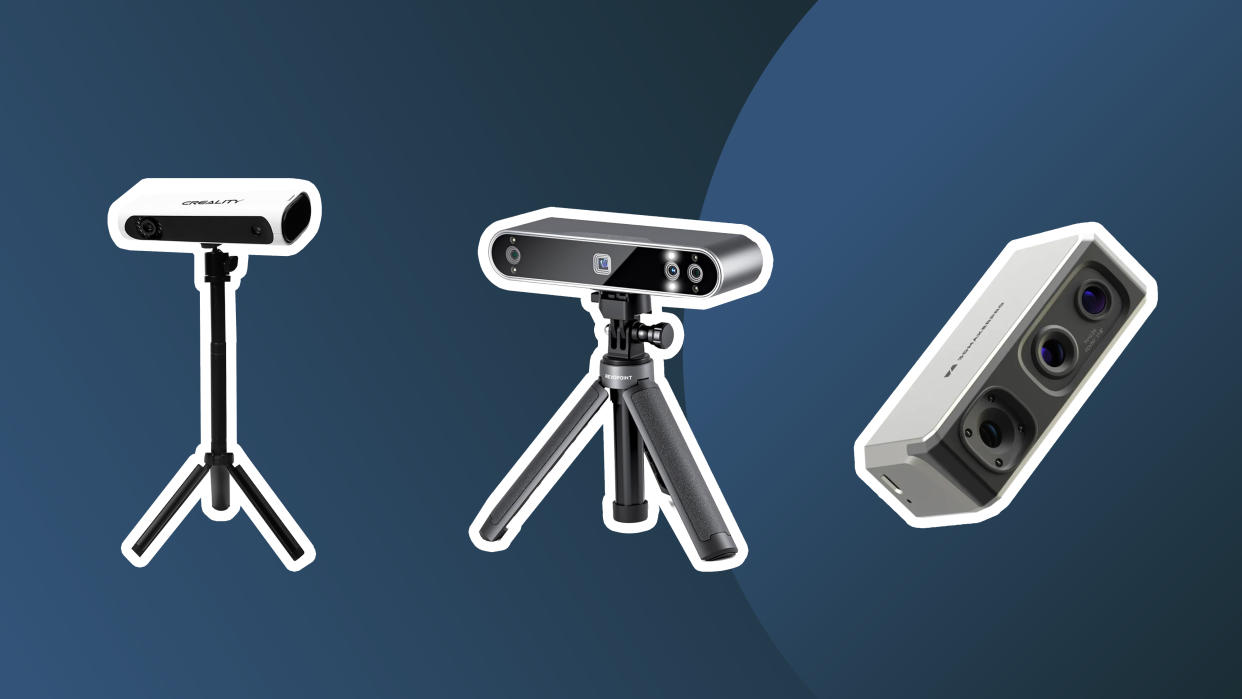
Quick menu

Jump to the quick list↴
1. Best overall: Creality CR Scan
2. Best handheld: Revopoint POP 3
3. For beginners: 3DMakerPro Seal
4. Big projects: Shining 3D Einstar
5. Best budget: Revopoint INSPIRE
6. Pro option: Shining 3D EinScan SP
7. Pocket option: iPhone 15 Pro
How to choose
How we test
FAQs
The best 3D scanners can allow you to create a 3D model on your computer from a real-life object. They use a variety of methods depending on the scanner, and they can either be portable or fixed to the wall. The former can scan much larger items due to the mobility.
At Creative Bloq, we have applied our wealth of experience from our in-depth reviews to pick out the best 3D scanners for different needs, from budget-friendly options for beginners to pro or semi-pro devices suitable for demanding projects. We've evaluated each one for build, capability, scan size, easy of use, speed and accuracy. Whatever is it that you want to digitise, you should find an option for you below.
To complete your set up, see our pick of the best 3D scanner software to get started creating your own 3D models. We also have a guide to the best 3D printers.
Quick list
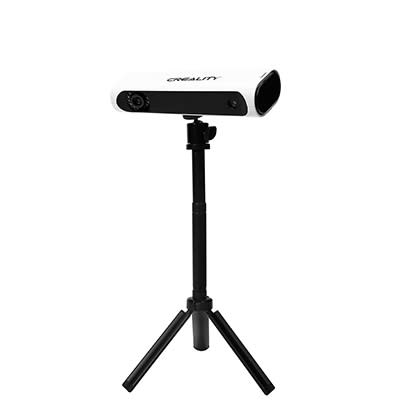
1. Creality CR Scan 01
We found the Creality CR Scan 01 to be a fantastic all-rounder with the ability to scan down to 0.1mm. It supports 24-bit true colour texture mapping, and requires no markers for scanning.
Read more below
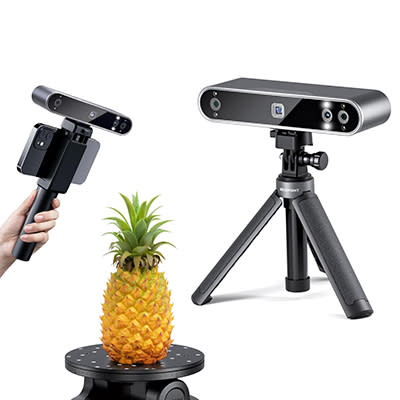
2. Revopoint POP 3
This is an ideal 3D scanner for quick hand-held scans. Reasonably priced and highly mobile, it boast a scan accuracy up to 0.05mm and can scan full colour at 10 frames per second.
Read more below
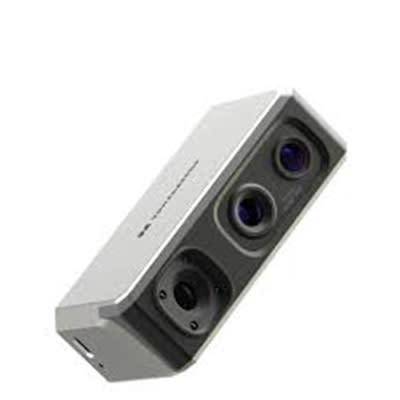
3. 3DMakerPro Seal 3D
We think this is an excellent choice as a first 3D scanner. It's well built, easy to set up and use, and the price is hard to argue with, offering great value for the quality and accuracy provided.
Read more below
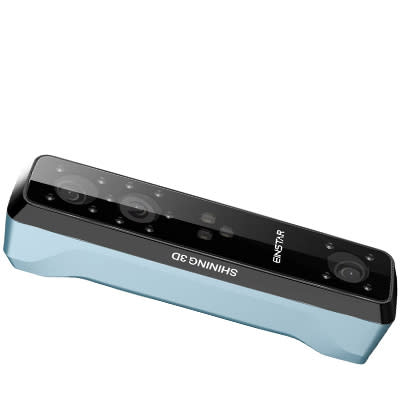
4. Shining 3D Einstar
This is an excellent option for artists wishing to scan larger objects or for objects outside. It's fairly fast, at up to 14 frames per second, and the software is good, helping make short work of larger ornaments.
Read more below
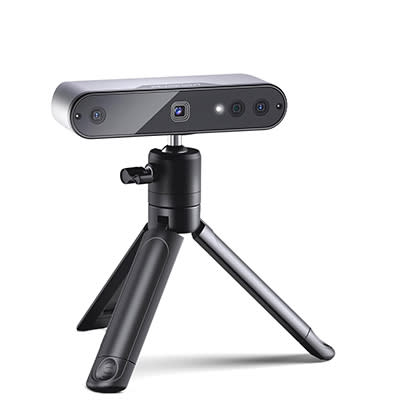
5. Revopoint INSPIRE 3D
This is a budget wonder. While it's not quite as accurate as some others, it's fast, easy to use, and it's compatible with Android. Best of all, the price is among the most reasonable we've seen.
Read more below
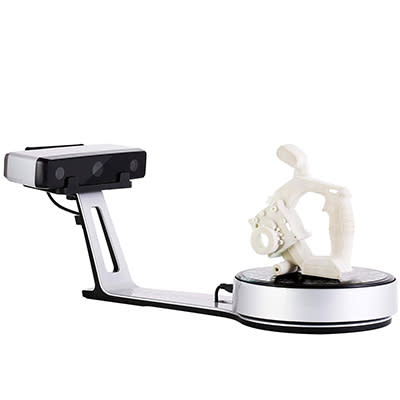
6. Shining 3D EinScan SP
It isn't cheap, but the precision of the Shining 3D EinScan SP makes it the perfect bridge to pro 3D scanning. It can generate colour scans in under four seconds with the attached turntable for accuracy and stability.
Read more below
The best 3D scanners in full
The best 3D scanner overall
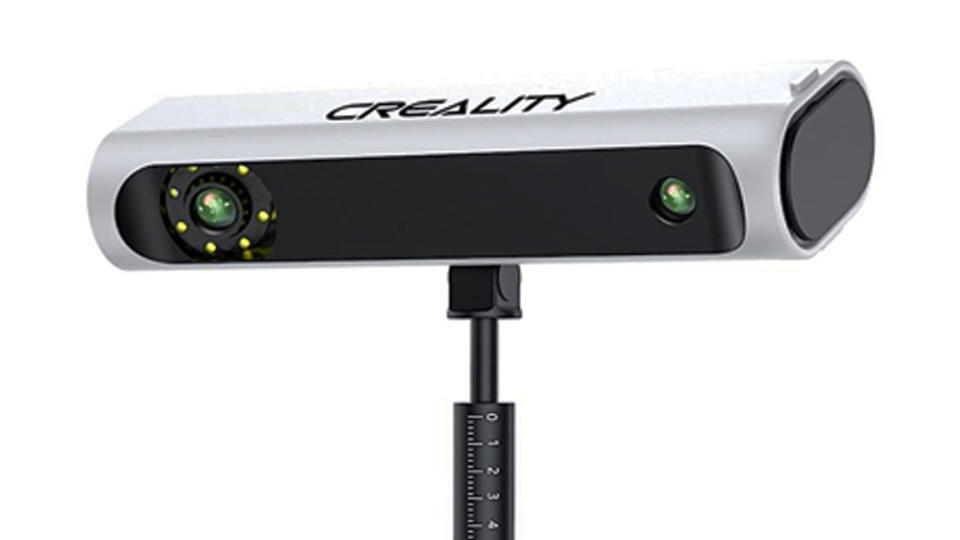
01. Creality CR Scan 01
The best 3D scanner for artists
Accuracy: Up to 0.1 mm | Max scanning area: 378 x 536 mm
High levels of fidelity
Reasonable price point
Colour texture mapping
Might be tricky to find at RRP
We found the Creality CR Scan 01 to be an excellent all-rounder and the best 3D scanner overall for a balance between price, quality and reliability. It comes from a manufacturer with a track record of being a true innovator in the maker space, with a wide range of 3D printers and scanners behind it.
The Creality CR Scan 01 is an enthusiast model with the ability to scan down to 0.1mm. It supports 24-bit true colour texture mapping, and requires no markers for scanning. It offers both handheld and tripod mounting with portable turntables, too.
We think this is a great 3D Scanner for artists already invested in the Creality product range, but it's easy to grasp and get good results, making it an ideal gadget for newcomers too.
The best handheld 3D scanner
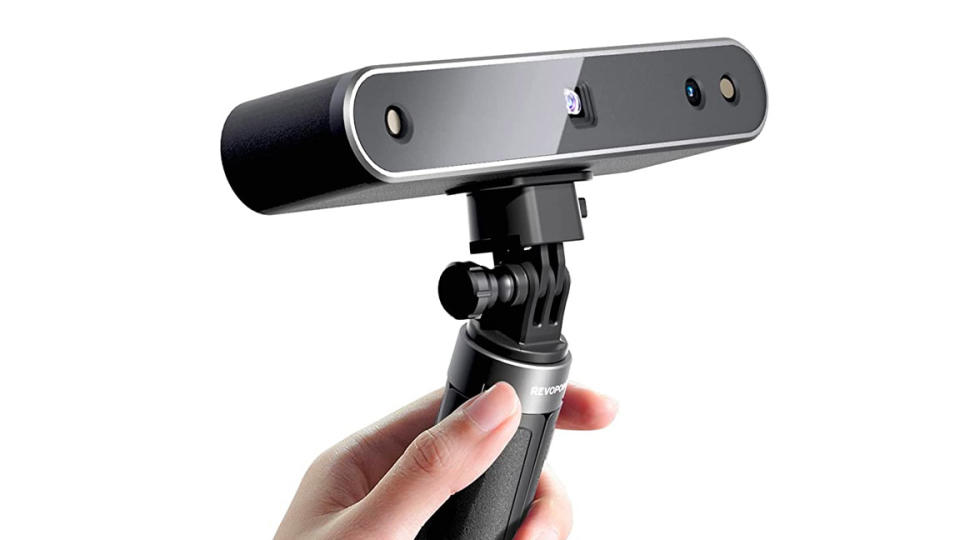
02. Revopoint POP 3
The best handheld 3D scanner
Accuracy: Up to 0.05 mm | Max scanning area: 250 x 180 mm | Weight: 195g
Good value for money
A good-size and portable
Reasonable colour mapping speed
Need to source own software solutions
Born from a Kickstarter project, the Revopoint POP 5 is the third iteration of this economical and highly mobile 3D scanner. A range of hardware improvements have modified the scan accuracy up to a super precise 0.05mm.
The camera aperture is now larger, letting in more light, and the device can scan at 12 to 18 frames per second, which is a good speed. We found the colours of scans to be vivid and realistic, and frame stitching was reliable. The handy compact size and carry bag make the device comfortable for handheld use to quickly scan objects.
The best handheld 3D scanner for newbies
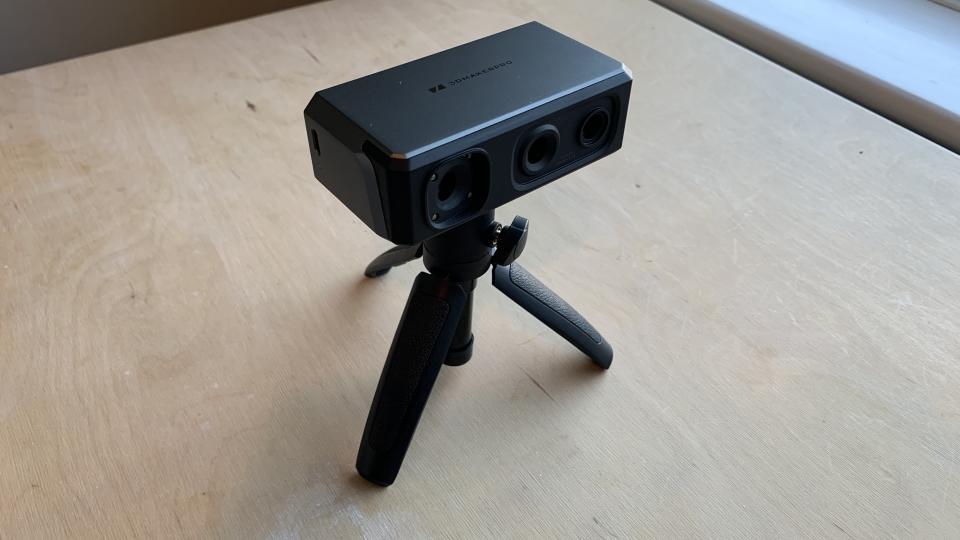
03. 3DMakerpro Seal 3D Scanner
The best 3D scanner for newcomers
Accuracy: Up to 0.01mm | Max scanning area: 100 x 75mm | Weight: 200g
Excellent price
Great build quality and very accurate for the price
Easy-to-use
Low FPS
Tripod and turntable are optional extras
We think this affordable option is a great choice as a first 3D scanner for beginners. It makes scanning super simple, it's compatible with both Mac and Windows, and the price makes it a sensible buy for those who want to try 3D scanning for the first time.
When we reviewed it, we were hugely impressed with how accurate it is for the price, with a single frame accuracy of 0.01mm and 24-bit colour capabilities. It's quite a feat to get that into an affordable consumer device. We would liked to see the tripod and turntable included as standard, but these have been omitted to keep the price of the scanner itself so low. All in all, we rate this as a solid scanner for hobbyists and anyone looking to get started.
See our full 3DMakerpro Seal 3D Scanner review for more details.
The best 3D scanner for large projects
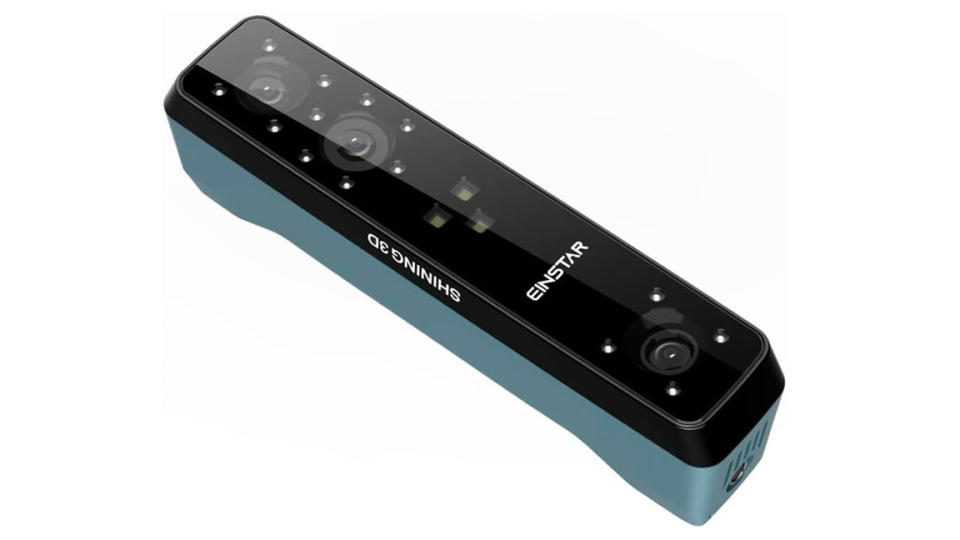
04. Shining 3D Einstar
The best 3D scanner for large projects
Accuracy: Up to 0.1 mm | Max scanning area: 160 - 1400 mm | Weight: 500g
Truly portable
Scans large objects
Can be used outdoors
Not great for scanning glossy surfaces
We think the Shining 3D Einstar is an excellent option for artists wishing to scan larger objects or for objects outside. With fast 3D scanning, 14 frames per second and decent software, we found it was able to make short work of scanning larger ornaments when we tested it. We found the level of detail to be excellent: there's even a "Hair Mode" option to get improved hair data from human scans.
This is a powerful scanner, and it can be harder to setup than the devices we've mention so far, and you will also want a good graphics card in your computer. However, it really excels at macro human scans (note, not eyes) and is designed for AR and VR use.
The best budget 3D scanner
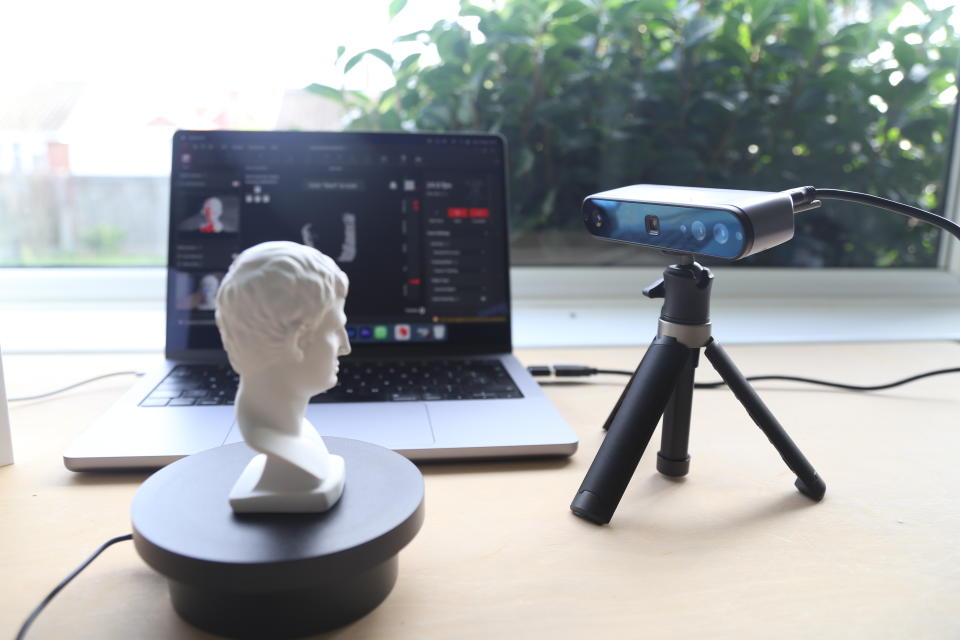
05. Revopoint Inspire 3D Scanner
The best cheap 3D scanner
Accuracy: Up to 0.2 mm | Max scanning area: 230 x 140mm | Weight: 140g
Very affordable
A reliable brand
Not the best single-frame accuracy
The Revopoint INSPIRE 3D Scanner is an entry-level 3D scanner with a very attractive price. It's not quite as accurate as the 3DMakerpro Seal 3D that I mentioned previously, but it has the benefit of Android compatibility. Based on our review, we think this is the best cheap 3D scanner around and a good tester for the undecided.
We found connecting either to a PC or, for true portability, an Android phone, to be straightforward, and the device offers pretty nifty capture speeds for the price at 14-18 fps, faster than the 3DMakerpro Seal 3D, which is a little more expensive. With the lower level of precision, we did find that this option took a bit more trial and error to get the results we wanted, but if you're prepared to persevere, it offers portability and reasonable speed for a very attractive price.
See our full Revopoint INSPIRE 3D Scanner review for more details.
The best professional 3D scanner
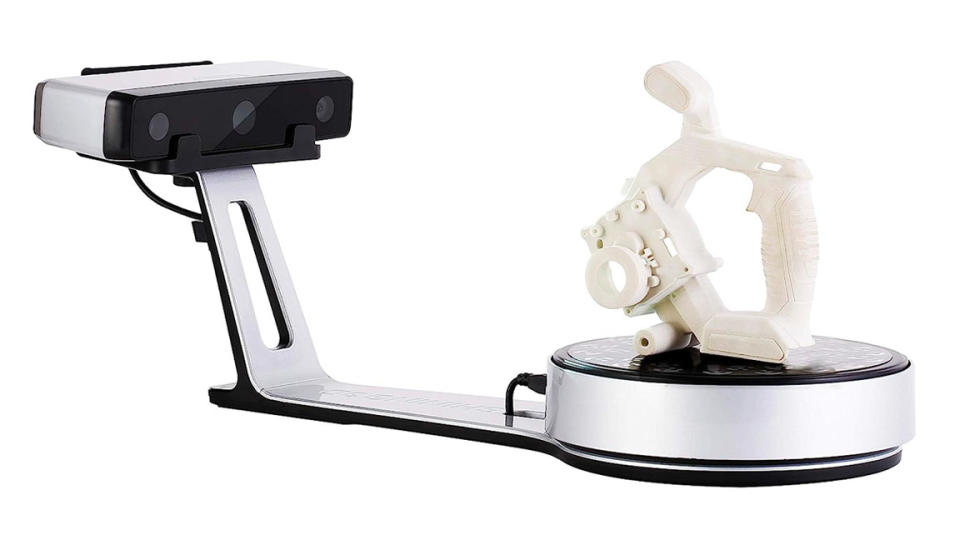
06. Shining 3D EinScan SP
The best professional 3D scanner
Accuracy: Up to 0.05 mm | Max scanning area: 200 x 150 mm | Weight: 2.5 kg
Incredibly fast
Very accurate scanner
Excellent software
Some experience in 3D is ideal
With the ability to scan down to 0.05mm, the Shining 3D EinScan SP is a true bridge between hobbyists and professional 3D scanners. It can be made portable and can generate scans and colour scans in under four seconds with the attached turntable option for accuracy and stability. (It can create a 360-degree scan in around a minute using the auto scan feature.)
While not cheap, the Shining 3D EinScan SP offers speed, versatility and accuracy backed by excellent software. This is a 3D scanner that will appeal to any artist wanting to get into scanning but has a demanding end-use case that ensures its scans can easily be used in a professional VR, AR or 3D modelling project.
Why is the Shining 3D EinScan SP so far down on my list? Purely because it is costly and aimed squarely at dedicated 3D artists with a professional pipeline who need high-end results. You will need to understand a slightly more complex software and have a good graphics card and a good desktop PC.
The best pocket 3D scanner
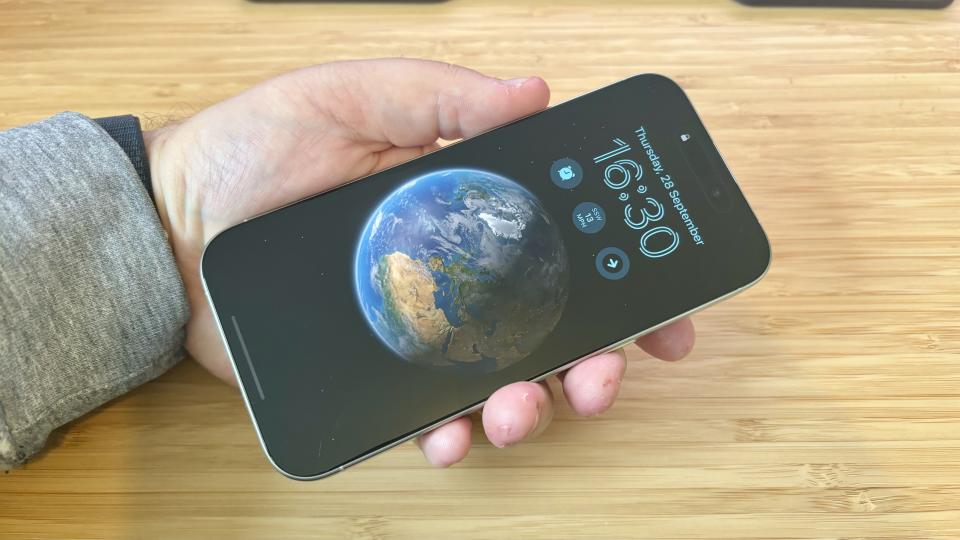
07. Apple iPhone 15 Pro
The best 3D scanner in your pocket
Accuracy: n/a | Max scanning area: n/a | Weight: 206g
You may already have one
Huge array of apps
Highly portable
Limited long-term use
Bit of a curveball, but the iPhone 15 Pro is an excellent 3D scanner. Yes, sometimes the best tool is the one you (may) already have. Since the release of the iPhone 13 Pro, the LiDAR Scanner has been used as part of the AR solution for creatives and as a 3D scanner.
A wide range of apps can turn your iPhone into a portable or tripod-mounted 3D scanner. While not as accurate or sophisticated as the other devices mentioned in my list, the iPhone is still a perfect stepping stone for those artists curious about 3D scanning.
If you need to be sold on just how handy and powerful an iPhone can be, take a look at the newly announced Metahuman Animator from Epic Games that enables you to scan an actor's performance and render the mocap data into a 3D, animated model.
See our hands-on iPhone 15 Pro review for a general analysis of the phone overall.
How to choose the right 3D scanner
To choose the right 3D scanner for you, you need to consider a series of key factors. Firstly, what will you be scanning? Object size, detail level and desired accuracy will all point you towards the kind of scanner you need, and we've mentioned these details for each scanner above.
Also think about budget. 3D scanners range from budget-friendly phone attachments to high-end industrial models costing tens of thousands. Determine how much you're willing to spend and prioritise features accordingly. Another factor is ease of use. Some scanners require extensive training, while others are more user-friendly. Finally, ensure the device's software is compatible with your hardware and operating system.
How we test 3D scanners
When we review 3D scanners, we test their accuracy, reliability, and performance. Our evaluation typically involves a series of comprehensive assessments to validate the scanner's ability to capture and reproduce three-dimensional objects with precision. Initial tests focus on the scanner's calibration, verifying that it accurately interprets spatial dimensions and distances. We also evaluate resolution, examining the device's ability to capture fine details, and speed of operation.
FAQs
Are 3D scanners worth the money?
While you can create 3D scans of small objects from a phone these days, you'll soon find the resolution lacking if you need to create professional models for games or AR and VR. So a high-resolution, dedicated 3D scanner with proper software to tidy-up and refine scans is important. So yes, for the best results a 3D scanner is needed.
How much should I pay for a good 3D scanner?
While there are cheap options, a good price for a 3D scanner from a reputable brand is around $500 / £400. This can go up to around $1,000 / £1,000 if you need a more professional 3D scanner with better resolution and accuracy.
What app do I need to 3D scan on an iPhone?
I'd recommend Polycam to create 3D scans using an iPhone or iPad (read our iPad generations feature to find which is best for you). This will capture 3D scans using the LiDAR sensor and you can edit the results in your mobile or tablet.
Are 3D scanners accurate?
The accuracy of 3D scanners is generally within 0.01mm and 0.1mm. The ability to scan details to less than 0.1mm in the range of detail available can lead to dense meshes, which the software with the scanner may be able to optimise. This creates an incredibly accurate 3D model of the item you wish to scan - the best 3D scanners are not just convenient, but are also very effective.
Is photogrammetry better than 3D scanning?
Overall, photogrammetry is better for realism and for scanning large rooms and spaces. But it's expensive and requires more work to generate models, if you need quick and accurate 3D models of small objects, 3D scanning is relatively cheap, very accurate and easy.

